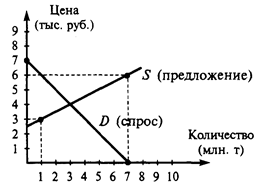Erikson is a Freudian ego-psychologist. This means that he accepts Freud's ideas as basically correct, including the more debatable ideas such as the Oedipal complex, and accepts as well the ideas about the ego that were added by other Freudian loyalists such as Heinz Hartmann and, of, course, Anna Freud. However, Erikson is much more society and culture-oriented than most Freudians, as might be expected from someone with his anthropological interests, and he often pushes the instincts and the unconscious practically out of the picture. Perhaps because of this, Erikson is popular among Freudians and non-Freudians alike!
He is most famous for his work in refining and expanding Freud's theory of stages. Development, he says, functions by the epigenetic principle. This principle says that we develop through a predetermined unfolding of our personalities in eight stages. Our progress through each stage is in part determined by our success, or lack of success, in all the previous stages. A little like the unfolding of a rose bud, each petal opens up at a certain time, in a certain order, which nature, through its genetics, has determined. If we interfere in the natural order of development by pulling a petal forward prematurely or out of order, we ruin the development of the entire flower.
Each stage involves certain developmental tasks that are psychosocial in nature. Although he follows Freudian tradition by calling them crises, they are more drawn out and less specific than that term implies. The child in grammar school, for example, has to learn to be industrious during that period of his or her life, and that industriousness is learned through the complex social interactions of school and family.
The various tasks are referred to by two terms. The infant's task, for example, is called "trust-mistrust." At first, it might seem obvious that the infant must learn trust and not mistrust. But Erikson made it clear that there it is a balance we must learn: Certainly, we need to learn mostly trust; but we also need to learn a little mistrust, so as not to grow up to become gullible fools!
Each stage has a certain optimal time as well. It is no use trying to rush children into adulthood, as is so common among people who are obsessed with success. Neither is it possible to slow the pace or to try to protect our children from the demands of life. There is a time for each task.
If a stage is managed well, we carry away a certain virtue or psychosocial strength which will help us through the rest of the stages of our lives. On the other hand, if we don't do so well, we may develop mal-adaptations and malignancies, as well as endanger all our future development. A malignancy is the worse of the two, and involves too little of the positive and too much of the negative aspect of the task, such as a person who can't trust others. A mal-adaptation is not quite as bad and involves too much of the positive and too little of the negative, such as a person who trusts too much.
| Stage
| Ages
| Basic Conflict
| Important Event
| Summary
|
| 1. Oral-Sensory
| Birth to 12 to 18 months
| Trust vs. Mistrust
| Feeding
| The infant must form a first loving, trusting relationship with the caregiver, or develop a sense of mistrust.
|
| 2. Muscular
| 18 months to 3years
| Autonomy vs. Shame/Doubt
| Toilet training
| The child's energies are directed toward the development of physical skills, including walking, grasping, and rectal sphincter control. The child learns control but may develop shame and doubt if not handled well.
|
| 3. Locomotors
| 3 to 6 years
| Initiative vs. Guilt
| Independence
| The child continues to become more assertive and to take more initiative, but may be too forceful, leading to guilt feelings.
|
| 4. Latency
| 6 to 12 years
| Industry vs. Inferiority
| School
| The child must deal with demands to learn new skills or risk a sense of inferiority, failure and incompetence.
|
| 6. Young Adulthood
| 19 to 40 years
| Intimacy vs. Isolation
| Love relationships
| The young adult must develop intimate relationships or suffer feelings of isolation.
|
| 7. Middle Adulthood
| 40 to 65 years
| Generativity vs. Stagnation
| Parenting
| Each adult must find some way to satisfy and support the next generation.
|
| 8. Maturity
| 65 to death
| Ego Integrity vs. Despair
| Reflection on and acceptance of one's life
| The culmination is a sense of oneself as one is and of feeling fulfilled.
|
| | | | | | | |




